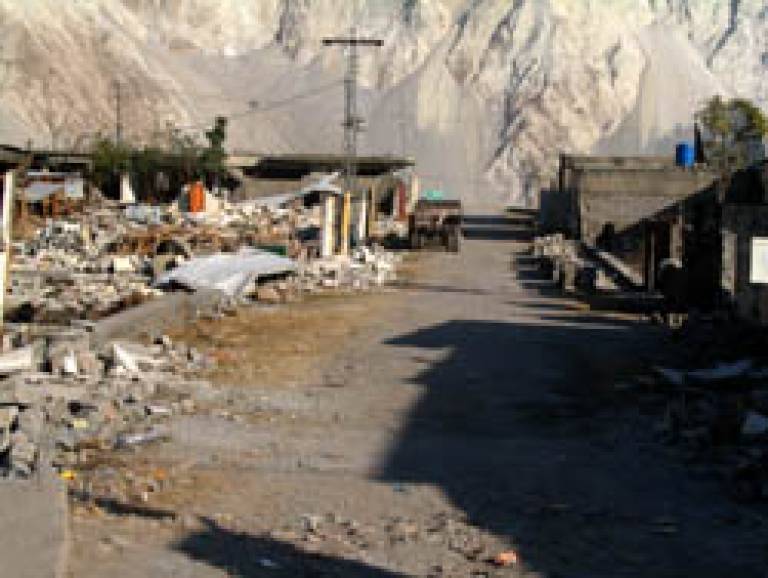Earthquake expert visits Pakistan
9 December 2005
Dr Tiziana Rossetto (UCL Civil and Environmental Engineering) has recently returned from an eight-day mission to survey the damage inflicted on the earthquake-stricken region of northern Pakistan.

A member of the Institute of Structural Engineers' Earthquake Engineering Field Investigation Team (EEFIT), Dr Rossetto was joined by a seismologist, an earthquake engineer and a structural engineer. The team also met with PhD student Ms Kate Crawford (UCL Civil and Environmental Engineering), who was in the region to help restore water supply and make shelters winter-proof.
On 8 October 2005, an earthquake hit a large area of the North-West Frontier Province and the Kashmir regions of Pakistan, in which at least 80,000 people lost their lives. The event caused landslides and damage to all types of construction, from rural dwellings to multi-storey buildings. The EEFIT team's mission was to identify the common types of construction, as well as construction practice and materials so they could make recommendations for future construction, repair and retrofit strategies and a review of any local existing seismic-resistant design codes.
Dr Rossetto said: "The region is in the foothills of the Himalayas, so a secondary effect of the earthquake was landslides on these slopes, which is very scary because people are living and working in areas that have not yet been cleared. People are living on or beneath slopes that will be very prone to landslide if it rains or if the snow melts. They don't seem to be aware of this risk, as well as having no alternative place to go."
In some regions, 80 per cent of all buildings suffered collapse damage, and some of the most remote communities have not been accessed by aid workers, so the full extent of damage still has not been realised. Dr Rossetto said: "It is rumoured that around 35,000 children died because the earthquake struck during school hours. Many schools collapsed because the buildings were not designed with any guidance or standards. In the main, these modern buildings were constructed with huge, heavy slabs of reinforced concrete supported by relatively small columns. During the earthquake, these were seen to 'pancake', causing a huge death toll. Domestic dwellings and older buildings are typically one storey structures of stone masonry held together with weak mud mortar. These were not strong enough to withstand the strong ground shaking in the epicentral region."
The team visited Abbottabad, Mansehra, Muzaffrabad, Bagh, Balakot and Islamabad. They conducted surveys on foot, and with the help of the United States Army, took aerial photos of remote areas in order to identify the distribution and extent of damage to structures, roads and bridges.
Apart from considering the damage caused by the disaster, the team visited manufacturers to see at first hand how building materials are made. "By seeing the mixes and methods used to make bricks and concrete blocks, we can very easily recommend alterations to the techniques that will improve the performance of the materials. This is a simple and cost-effective way to provide better materials for reconstruction." said Dr Rossetto. "At the moment, how a building is made, is up to the constructor, but this is a multi-hazard area prone to earthquakes, landslides and floods. Engineering protection and development steps at this early stage of rebuilding could protect future generations."
The EEFIT team are now compiling a preliminary report, due to go online in January 2006, with a full report expected later that year. Also in early 2006, the EEFIT team will publish their final report and recommendations following their mission to tsunami-affected regions one year ago.
At 6pm on 7 February 2006 in UCL's Chadwick Lecture Theatre, Dr Rossetto, Ms Crawford and the rest of the EEFIT team will present their observations and findings at their seminar 'The October 8, 2005 Pakistan Earthquake - Effects and Relief.' The seminar is open to all.
Image 1: The extent of damage in Muzaffrabad
Image 2: Shops and homes in Muzaffrabad
 Close
Close

